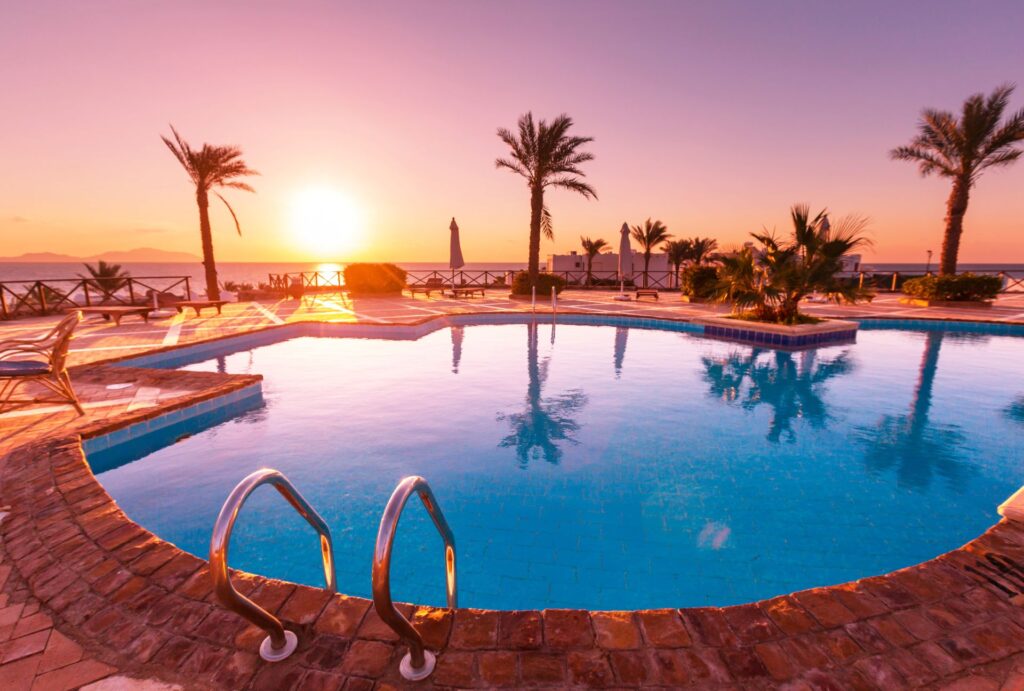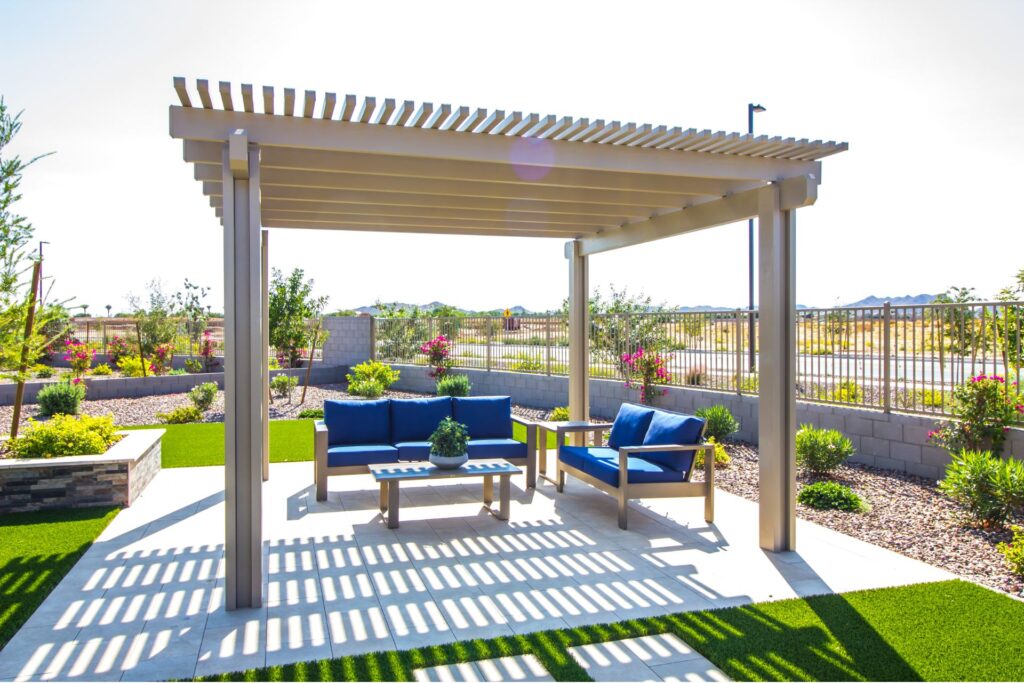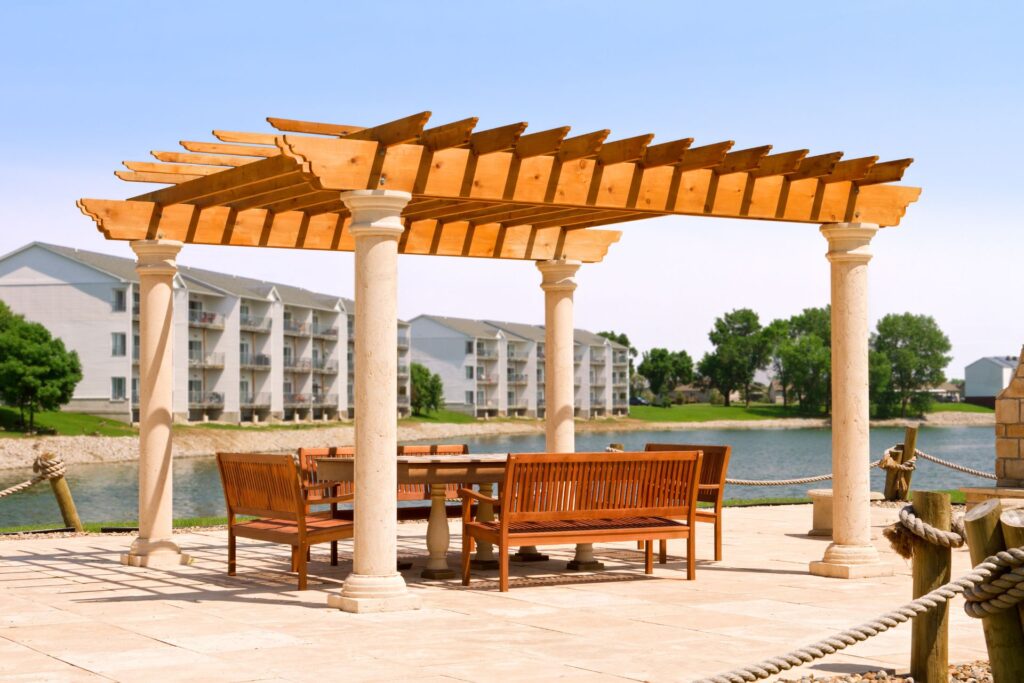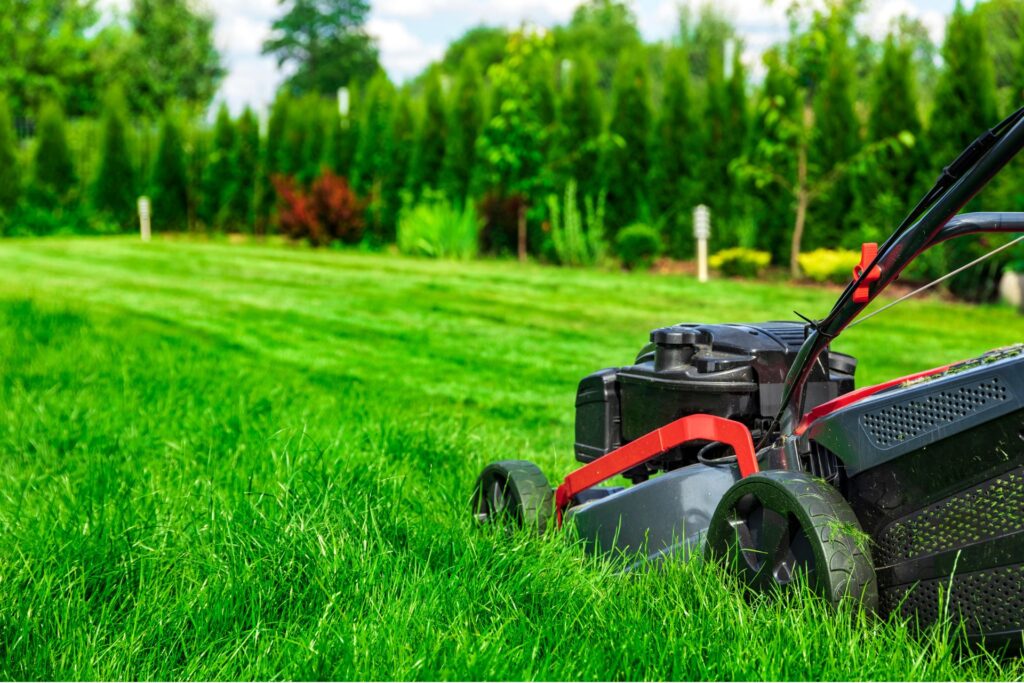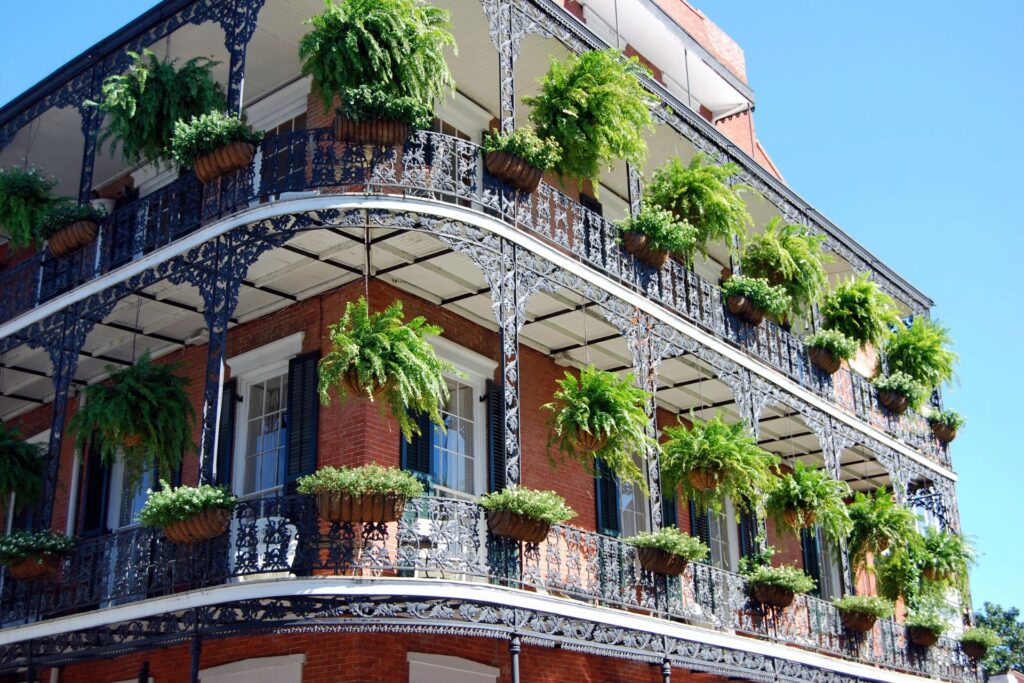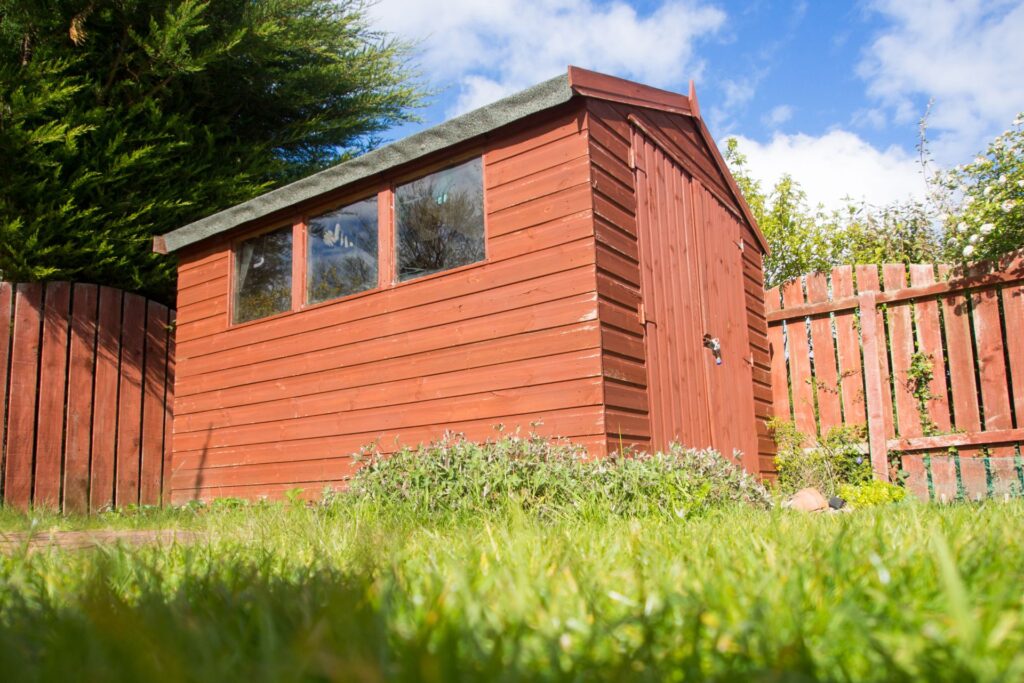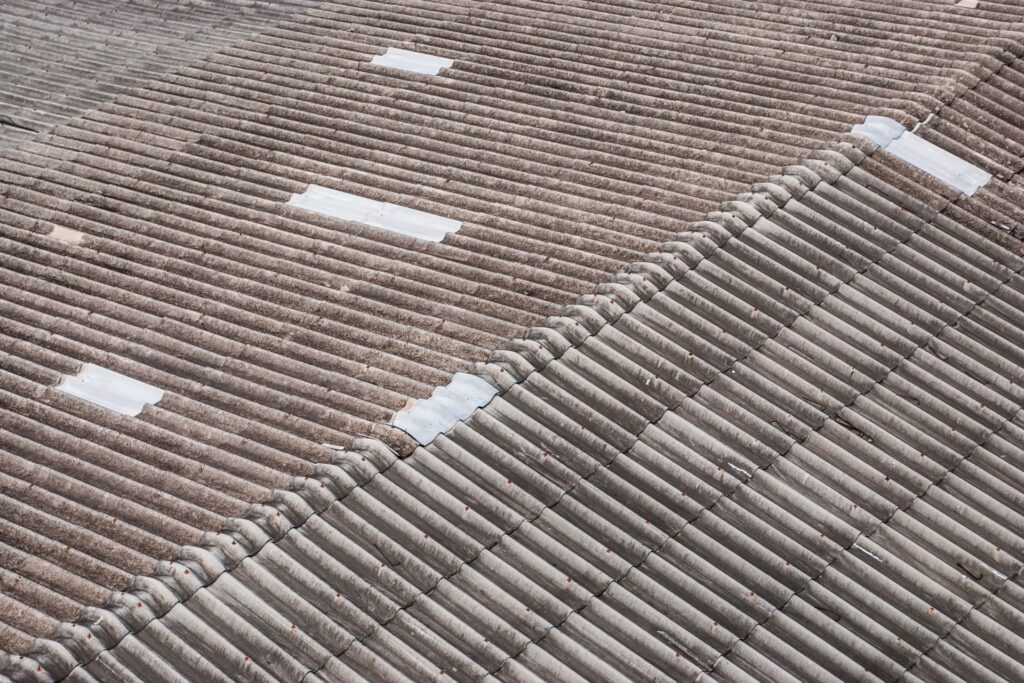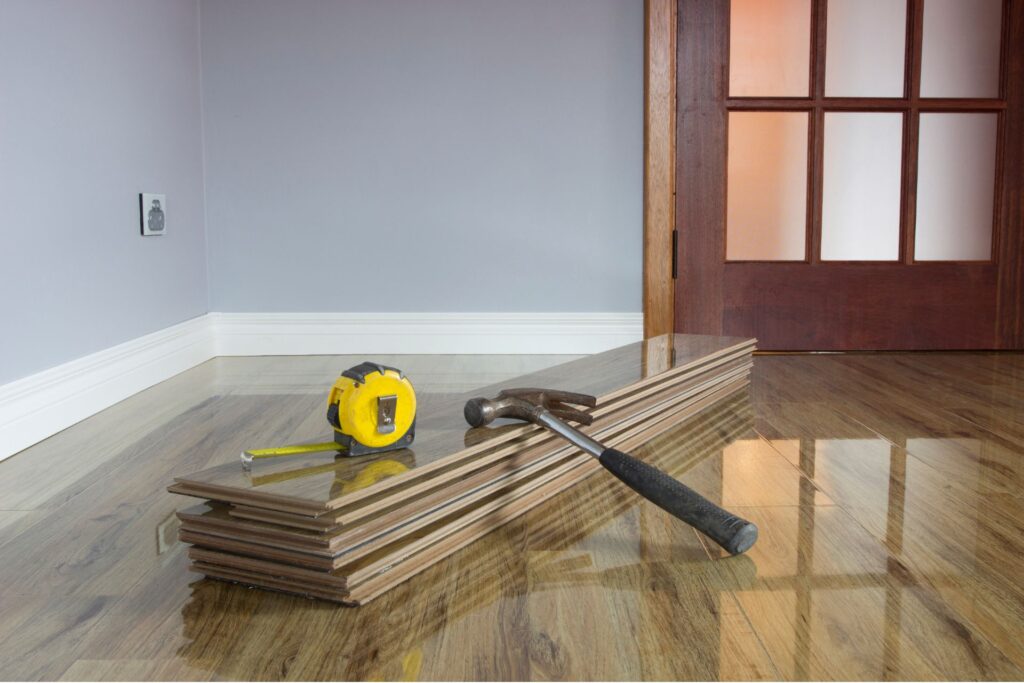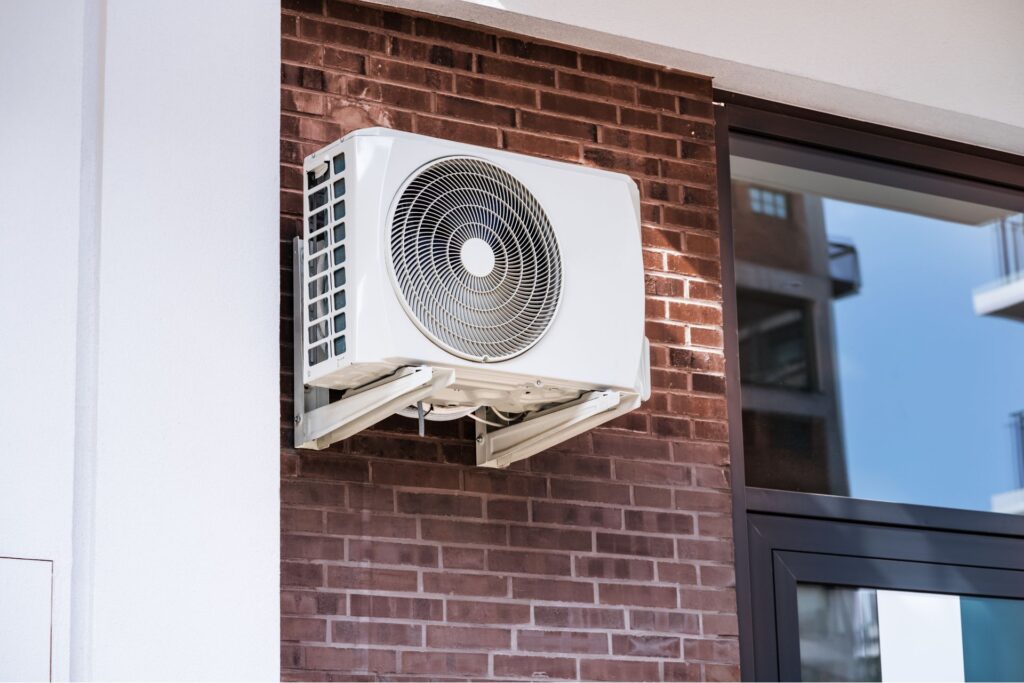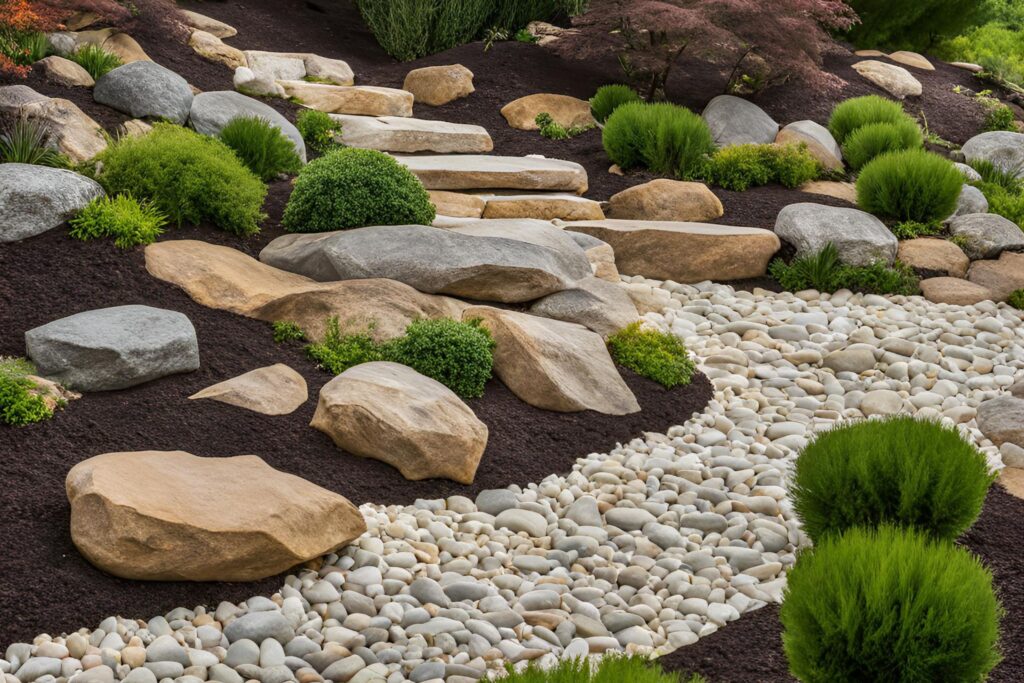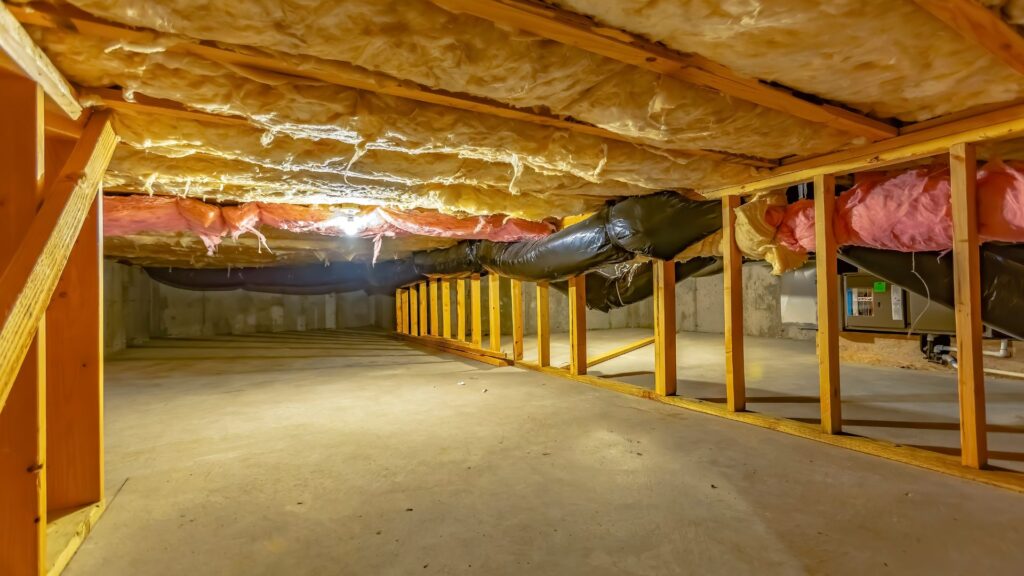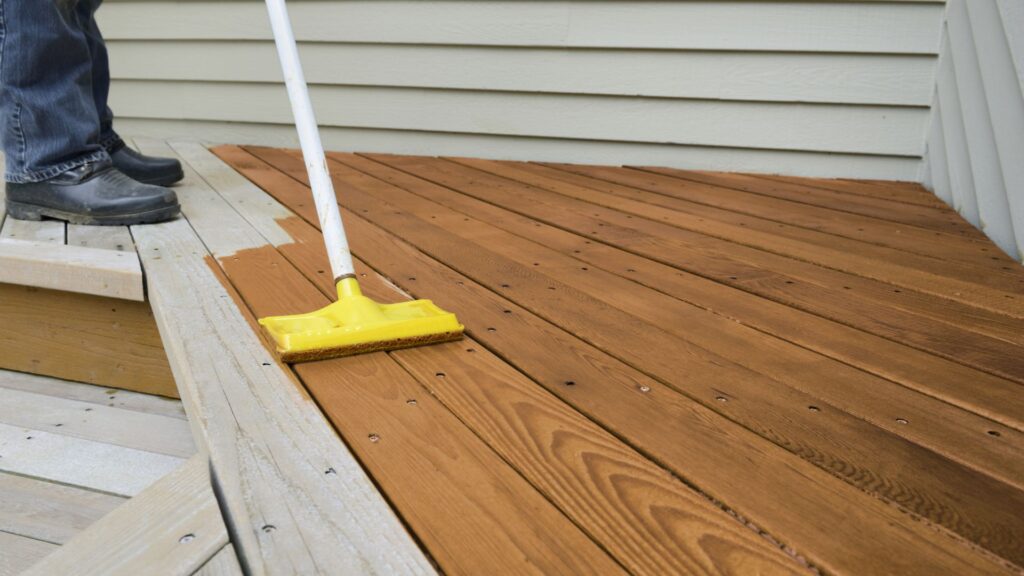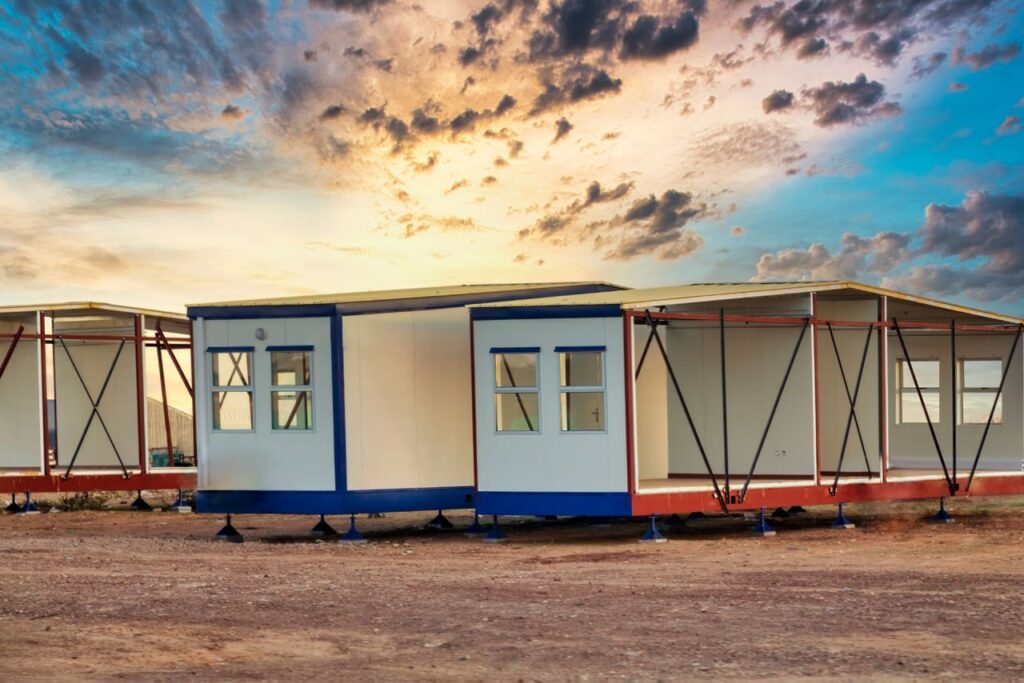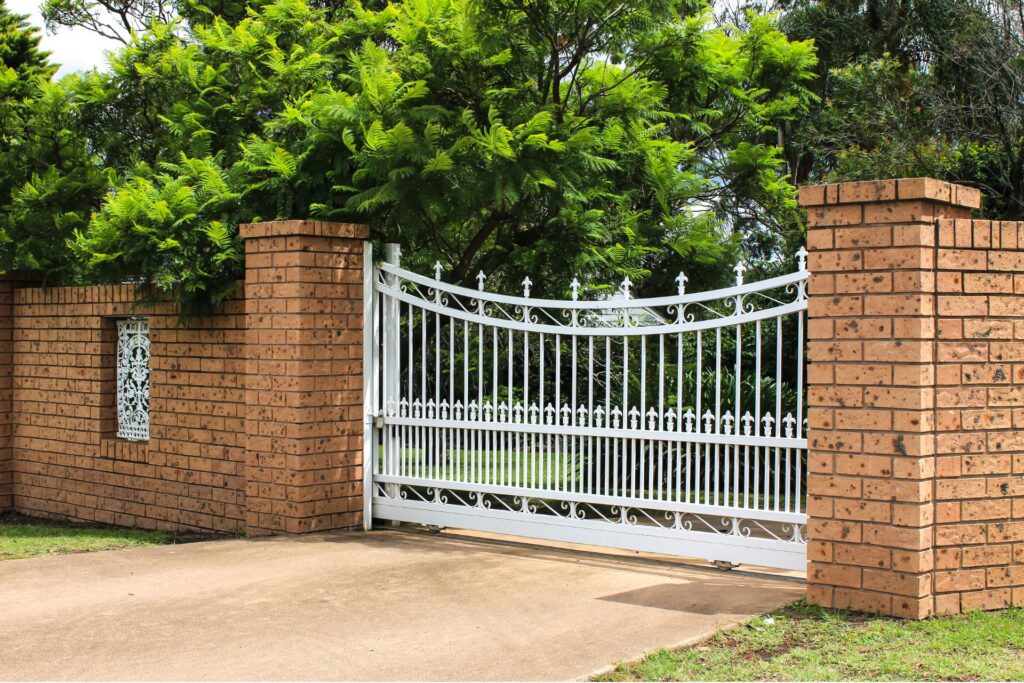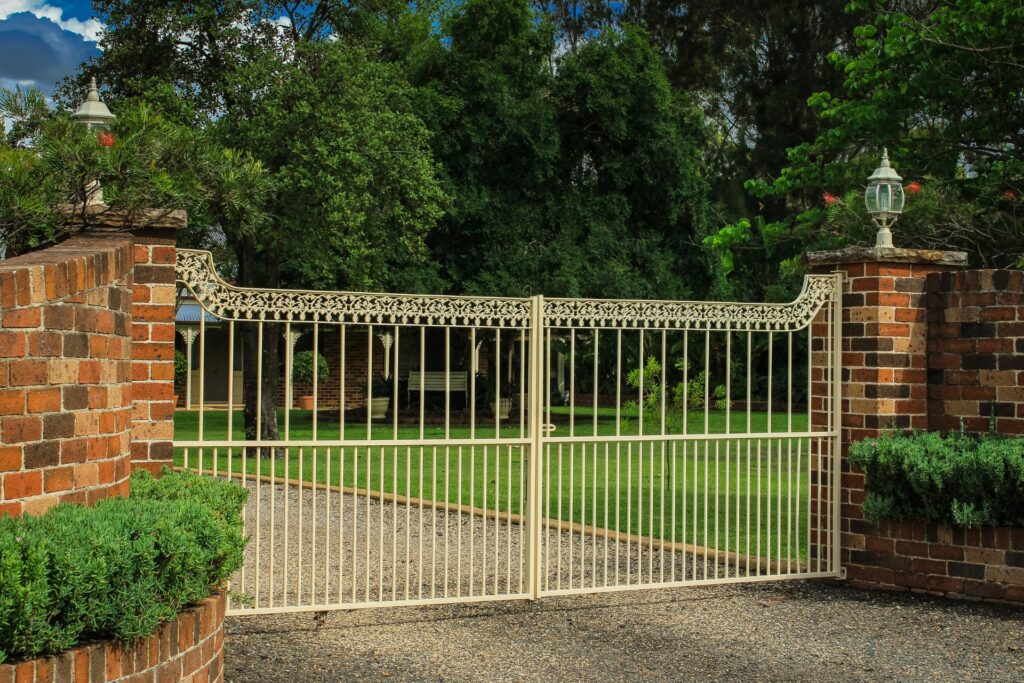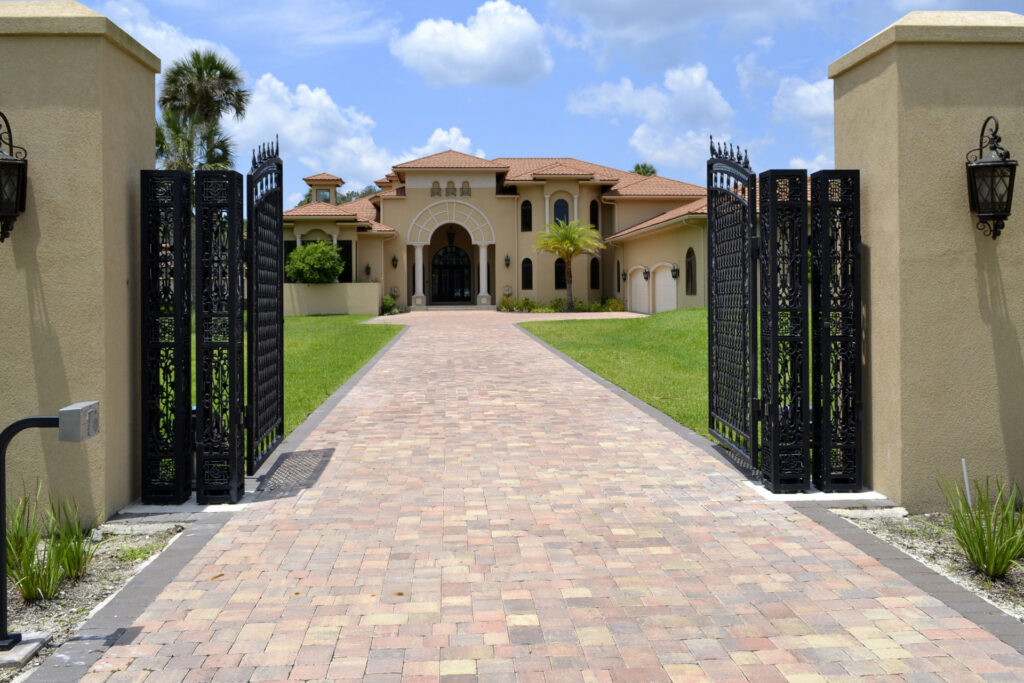Welcome to the ultimate guide to swimming pool installation! Whether you’re dreaming of lazy summer afternoons spent by the water, hosting poolside gatherings, or simply elevating your backyard’s appeal, installing a swimming pool is a big step toward creating your personal oasis. In this guide, we’ll walk you through everything you need to know about the process—from choosing the perfect pool type to understanding the costs, navigating permits, and even mastering maintenance. By the end, you’ll feel confident and ready to dive into your pool installation journey, armed with all the knowledge to make informed decisions.
Installing a swimming pool involves several key steps: planning and securing permits, choosing the right pool type (in-ground or above-ground), preparing the site through excavation, and completing the installation with plumbing, electrical work, and finishing touches. Costs vary based on materials, size, and location, while ongoing maintenance ensures longevity. Proper planning and expert guidance can help you create the perfect backyard oasis.
- Why Install A Swimming Pool?
- Types Of Swimming Pools
- The Swimming Pool Installation Process
- Costs Of Swimming Pool Installation
- Common Mistakes To Avoid When Installing A Swimming Pool
- Pool Maintenance Essentials
- Enhancing Your Pool Area: Transforming Your Backyard Into A Paradise
- Is Installing A Pool Right For You?
- FAQs: About The Swimming Pool Installation
- Conclusion
- Find A Professional Pool Builders Company Near You!
Why Install A Swimming Pool?
Deciding to install a swimming pool is an exciting step toward transforming your backyard into a space for leisure, fitness, and lasting memories. But beyond the surface-level appeal, there are plenty of practical and emotional benefits to consider. Let’s dive into why adding a swimming pool could be one of the best decisions you’ll make for your home and lifestyle.
Benefits Of Having A Pool
1. Recreation And Relaxation
A swimming pool is the ultimate symbol of fun and relaxation. Whether you’re hosting a pool party with friends, enjoying a quiet swim after a long day, or simply lounging poolside with a book, a pool provides endless opportunities for recreation and unwinding. It’s a space where families can bond, kids can play, and adults can recharge their batteries.
2. Increase In Property Value
Installing a swimming pool can significantly boost your property’s resale value, especially in neighborhoods or regions where pools are highly desirable. Potential buyers often see a pool as a luxury feature, making your home more attractive in the real estate market. While the exact value added will depend on factors like location and pool type, it’s a long-term investment that often pays off.
3. Aesthetic Enhancement Of Your Backyard
Beyond functionality, a well-designed pool can serve as the centerpiece of your outdoor space. Pools can be customized to match your home’s aesthetic, complete with stylish decking, landscaping, and water features. This transforms an ordinary backyard into a beautiful oasis that you’ll love to spend time in and show off to guests.
4. Fitness Benefits (Low-Impact Exercise)
Swimming is one of the best low-impact exercises for people of all ages. It provides a full-body workout that improves cardiovascular health, builds muscle strength, and enhances flexibility—all without putting stress on your joints. Having a pool at home makes staying fit and healthy more convenient, turning exercise into an enjoyable part of your routine.
Things To Consider Before Taking The Plunge
While the idea of installing a swimming pool is exciting, there are several important factors to evaluate before you dive in. Careful planning ensures that your investment meets your expectations and avoids potential headaches down the road.
1. Budgeting (Installation And Long-Term Costs)
Swimming pool installation can be a significant financial commitment. Beyond the upfront cost, you’ll need to consider long-term expenses like maintenance, heating, chemical treatments, and potential repairs. Being realistic about your budget will help you make informed decisions about the pool type and features that align with your financial plan.
2. Available Space And Zoning Regulations
Before installation, assess whether your property has enough space for the type of pool you envision. Consider factors like the pool’s size, shape, and proximity to your home or other structures. Additionally, check local zoning laws and building codes, as these may dictate pool placement, fencing requirements, and safety measures.
3. Maintenance Requirements And Time Investment
Owning a pool isn’t just about enjoying it—it also comes with responsibilities. Regular cleaning, chemical balancing, and equipment maintenance are necessary to keep your pool safe and functional. Consider whether you have the time and resources to manage these tasks or if you’ll need to hire a professional service.
4. Climate Considerations
The climate in your area plays a big role in determining whether a pool is a practical addition. In warmer regions, pools can be enjoyed year-round, while in colder climates, you’ll need to account for seasonal use and the cost of heating or winterizing your pool. Understanding how often you’ll use the pool can help justify the investment.
Installing a swimming pool is more than just a home improvement project—it’s a lifestyle upgrade. From providing a space for relaxation and fitness to enhancing your property’s value and visual appeal, the benefits are undeniable. However, careful planning and consideration of factors like budget, space, and maintenance are essential to ensure your pool brings you joy and satisfaction for years to come.
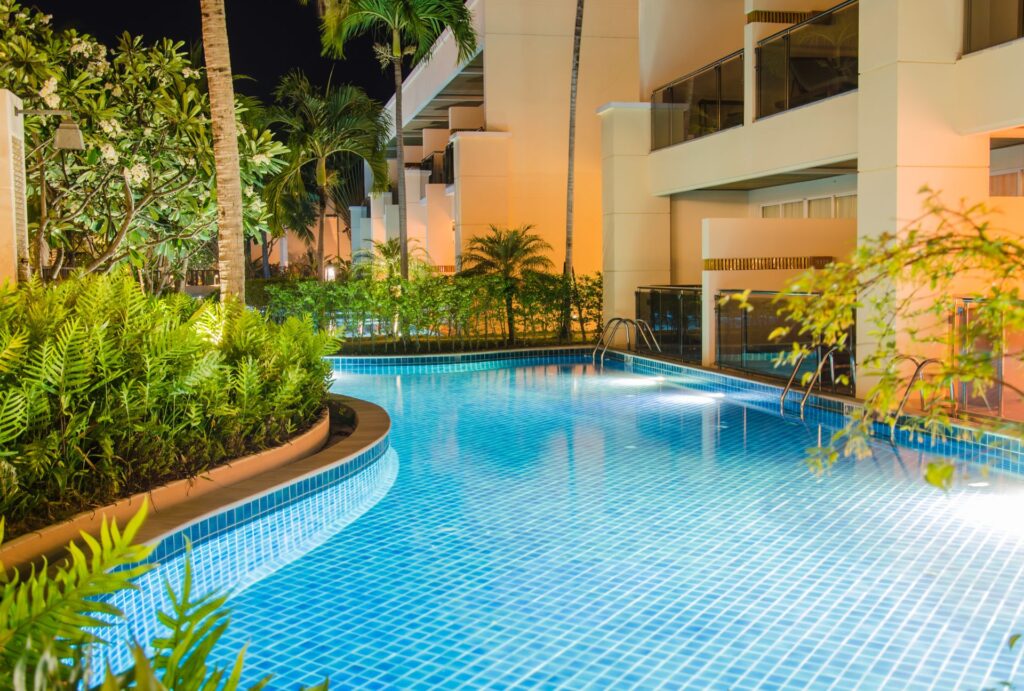
Types Of Swimming Pools
When considering a swimming pool for your home, understanding the different types available is essential to make the best choice for your needs, budget, and lifestyle. In this section, we’ll explore the three main types of swimming pools: In-Ground Pools, Above-Ground Pools, and the difference between Saltwater and Chlorine Pools. Each has its own unique features, benefits, and considerations.
In-Ground Pools
In-ground pools are a popular choice for homeowners seeking a permanent and luxurious addition to their property. These pools are constructed below ground level and can be customized to fit virtually any design or shape. The three primary materials used for in-ground pools are concrete, vinyl, and fiberglass, each offering distinct advantages and disadvantages.
- Concrete Pools
Concrete pools are the most customizable option, allowing homeowners to design unique shapes, sizes, and finishes. They are highly durable and can last for decades when properly maintained. However, they are also the most expensive to build and maintain. Installation takes several weeks, and over time, the surface may require resurfacing to prevent cracks and wear. - Vinyl Pools
Vinyl pools are lined with a flexible vinyl material stretched over a frame. They are more affordable than concrete pools and faster to install. The smooth surface of vinyl pools feels comfortable to the touch, making them a family-friendly option. However, the vinyl liner can be prone to punctures and may need replacement every 7–10 years. - Fiberglass Pools
Fiberglass pools are pre-fabricated and delivered to your property in a single piece, making installation quick and straightforward. They are low-maintenance, durable, and resistant to algae growth due to their non-porous surface. While they offer fewer customization options compared to concrete, they are a great choice for homeowners seeking a hassle-free pool solution.
Best For
In-ground pools are ideal for those who prioritize durability, aesthetic appeal, and customization. They add significant value to your property and create a luxurious outdoor living space.
Above-Ground Pools
Above-ground pools are a fantastic alternative for those who want a swimming pool without committing to the cost and complexity of in-ground installation. These pools are installed above ground level and are often made from metal, plastic, or resin.
- Affordability
Above-ground pools are significantly more affordable than in-ground pools, making them a great option for families on a budget. They come in various sizes and designs, allowing homeowners to choose a pool that fits their needs without breaking the bank. - Ease Of Installation
Above-ground pools are much easier and quicker to install. Most can be set up within a day or two, and they don’t require extensive excavation or construction work. This makes them a convenient option for renters or those who may want to relocate their pool in the future. - Limited Lifespan
While above-ground pools are budget-friendly, they tend to have a shorter lifespan compared to in-ground pools. They are more susceptible to wear and tear and may need replacement or repairs after 7–15 years. Additionally, they have fewer customization options and may not add as much value to your property.
Best For
Above-ground pools are perfect for those looking for a low-cost, temporary swimming solution. They’re ideal for families who want a pool for seasonal use without a long-term investment.
Saltwater Vs. Chlorine Pools
One of the key decisions in pool ownership is whether to opt for a saltwater pool or a chlorine pool. Both have their unique advantages, and the choice often comes down to personal preference, maintenance requirements, and budget.
- Saltwater Pools
Saltwater pools use a salt chlorinator to convert salt into chlorine, providing a gentler swimming experience. They are known for being easier on the skin, eyes, and hair, making them a preferred choice for families with sensitive skin. Saltwater systems require a higher upfront cost but tend to have lower ongoing chemical costs and require less frequent maintenance. However, the salt can corrode certain pool materials over time, which may lead to additional maintenance needs. - Chlorine Pools
Chlorine pools rely on adding chlorine manually to sanitize the water. They are generally less expensive to install and repair, and pool owners have greater control over the chlorine levels. However, regular testing and balancing of chemicals are essential to maintain water quality. Chlorine pools may cause irritation for some swimmers, especially if the levels are not properly maintained.
Comparison Of Costs, Maintenance, And Experience
- Cost: Saltwater pools are more expensive upfront due to the salt chlorinator but have lower ongoing chemical costs. Chlorine pools are cheaper to install but require more frequent chemical purchases.
- Maintenance: Saltwater pools involve less frequent chemical adjustments but may require periodic replacement of the chlorinator cell. Chlorine pools need regular testing and manual chemical additions.
- Experience: Saltwater pools offer a smoother, gentler swimming experience, while chlorine pools can be harsher on the skin and eyes.
Best For
Saltwater pools are ideal for homeowners seeking a low-maintenance option and a more comfortable swimming experience. Chlorine pools are better suited for those on a tighter budget or who prefer traditional pool systems.
Understanding these types of swimming pools helps you make an informed decision that aligns with your budget, preferences, and long-term goals. Whether you choose an in-ground pool, an above-ground pool, or decide between saltwater and chlorine, the right pool will transform your backyard into the perfect retreat.

The Swimming Pool Installation Process
Installing a swimming pool is an exciting project, but it requires careful planning and execution to ensure success. Below is a detailed, step-by-step guide to help you understand the process, from the initial planning stages to the final touches. Following these steps will not only streamline the installation but also set you up for years of enjoyment.
Step 1: Planning And Permits
- Importance Of Planning Your Pool’s Location And Design
The first step in any swimming pool installation project is careful planning. Consider the location of your pool in relation to your house, landscaping, and property lines. Choose a spot that receives ample sunlight, has proper drainage, and is accessible for maintenance. Additionally, think about the pool’s design—size, shape, and features such as steps, diving boards, or built-in lighting. Proper planning will ensure the pool complements your backyard and meets your family’s needs. - Navigating Local Regulations And Obtaining Permits
Before breaking ground, it’s crucial to understand local building codes and zoning laws. Many municipalities have regulations regarding pool depth, fencing requirements, and distance from property boundaries. You’ll need to apply for permits, which often require submitting detailed plans for review. While navigating these regulations may seem tedious, compliance is essential to avoid fines or delays later in the process.
Step 2: Choosing The Right Contractor Or DIY
- Tips For Finding A Reputable Contractor
Hiring the right contractor can make or break your swimming pool installation experience. Start by researching local companies and reading reviews from previous clients. Ask for referrals from friends or neighbors who have installed pools. During consultations, request a detailed estimate and timeline, and ensure the contractor is licensed, insured, and experienced in the type of pool you’re installing. A reputable contractor will provide transparency and help guide you through the entire process. - When And How A DIY Installation Might Be Feasible
For those looking to save money or enjoy a hands-on project, a DIY installation may be possible—particularly for above-ground pools. However, this approach requires careful consideration. Ensure you have the tools, skills, and time to handle tasks like leveling the ground, assembling the pool structure, and installing the filtration system. For in-ground pools, a DIY approach is much more complex and typically not recommended due to the need for professional excavation, plumbing, and electrical work.
Step 3: Preparation And Excavation
- Site Preparation, Excavation, And Soil Considerations
Once permits are secured and contractors are hired, the next step is preparing the site. This involves clearing the area of debris, leveling the ground, and marking the pool’s layout. For in-ground pools, excavation begins by digging the hole according to the planned dimensions. Soil conditions play a significant role; unstable or rocky soil may require additional preparation or reinforcement, which can increase costs and timelines. - Estimated Time Frame For This Phase
Preparation and excavation generally take 1–2 weeks for most in-ground pools, though the timeline can vary based on the complexity of the design, weather conditions, and soil challenges. Above-ground pools typically have a shorter preparation phase, often completed in a day or two.
Step 4: Installation Of The Pool Structure
- Details For In-Ground Vs. Above-Ground Pool Installation
In-ground pool installation involves placing the shell (fiberglass or vinyl) or pouring concrete for custom designs. Each method has unique steps and timelines. For above-ground pools, the structure is assembled and secured in place, often requiring less labor and equipment. - Plumbing, Electrical Systems, And Reinforcement
Plumbing lines are installed to connect the pool to the filtration and heating systems, ensuring water circulation and cleanliness. Electrical work includes wiring for pumps, heaters, and lighting. Reinforcement such as rebar and concrete may be required for in-ground pools to maintain stability and durability. This phase is critical, as poor installation can lead to long-term issues like leaks or system malfunctions.
Step 5: Finishing Touches And Filling Your Pool
- Adding Decking, Landscaping, Or Fencing For Safety
Once the structure is installed, it’s time to add the finishing touches that transform your pool into a functional and inviting space. Install decking or paving around the pool for safety and aesthetic appeal. Consider adding landscaping elements like plants, rocks, or pathways to enhance the backyard’s overall look. Don’t forget fencing, which is often required by law to ensure safety and prevent unauthorized access. - The Final Step: Filling Your Pool With Water And Testing Systems
The last step is filling your pool with water and testing all systems, including the pump, filter, and heater, to ensure they are working correctly. Adjust the chemical levels, such as pH and chlorine, to create a safe swimming environment. Once everything is in place, your pool is ready for its first splash!
By following this step-by-step guide, you can ensure a smooth swimming pool installation process. Whether you’re hiring professionals or tackling parts of the project yourself, proper planning and attention to detail will result in a pool that brings years of enjoyment and enhances your home’s value.
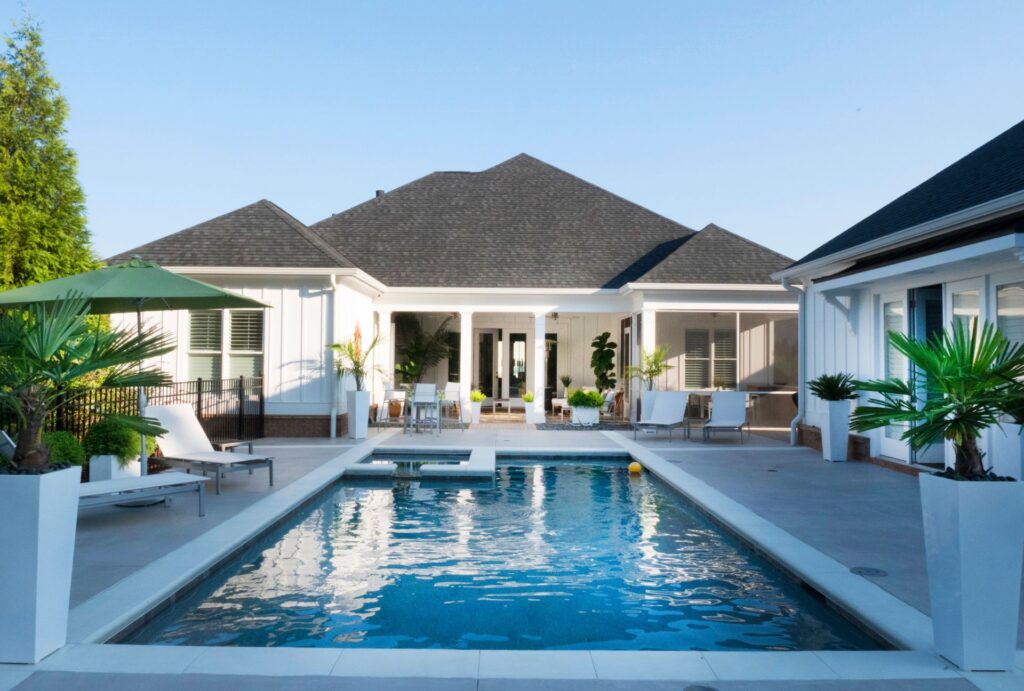
Costs Of Swimming Pool Installation
When it comes to installing a swimming pool, understanding the costs involved is essential for effective planning. Swimming pools are a significant investment, and their cost is influenced by various factors, from the type of pool to ongoing maintenance expenses. In this section, we’ll break down the costs associated with swimming pool installation and highlight hidden expenses that you should consider.
Breaking Down The Costs
Initial Installation Costs For In-Ground Vs. Above-Ground Pools
The first major decision when installing a pool is choosing between an in-ground or above-ground option. Each type has a different price range, primarily influenced by materials, design, and labor requirements.
- In-Ground Pools
In-ground pools are often the go-to choice for homeowners seeking a long-lasting, luxurious backyard addition. On average, they cost anywhere from $30,000 to $100,000 or more, depending on the materials used.
- Concrete Pools: The most customizable and durable option, but also the most expensive, ranging between $50,000 and $100,000.
- Fiberglass Pools: Easier to install and requiring less maintenance, with costs typically ranging from $40,000 to $70,000.
- Vinyl Pools: The most budget-friendly in-ground option, costing between $30,000 and $50,000, though liners need replacement every 5–10 years.
- Above-Ground Pools
Above-ground pools are a more affordable alternative, making them popular for families on a budget. Installation costs usually range from $1,500 to $10,000, depending on size and materials. While they don’t offer the same durability or customization as in-ground pools, they’re quicker to install and easier to remove if necessary.
Factors Affecting Pricing (Size, Materials, Location, Labor)
Several key factors influence the final cost of your swimming pool installation.
- Size And Shape: Larger pools require more materials and labor, which increases the price. Complex shapes or custom designs will also add to the cost.
- Materials: From concrete to vinyl, the choice of materials has a significant impact on the price. Premium finishes like mosaic tiles or natural stone can further drive up costs.
- Location: Installation costs vary depending on your geographic location. Factors such as local labor rates, permit requirements, and site accessibility can all affect pricing.
- Labor And Excavation: For in-ground pools, excavation is a major cost factor. Challenging terrain, rocky soil, or limited access can increase the complexity and expense of this process.
Hidden And Ongoing Costs
Maintenance, Chemicals, Utilities, And Repairs
Beyond the initial installation, owning a pool comes with recurring expenses that need to be factored into your budget.
- Maintenance: Routine pool maintenance is crucial for keeping the water clean and safe. Regular tasks like skimming, vacuuming, and filter cleaning can cost between $1,200 and $1,800 annually if outsourced to professionals.
- Chemicals: Maintaining the right water chemistry is essential to prevent algae growth and bacteria. Pool chemicals like chlorine, pH balancers, and algaecides typically cost $300 to $600 annually.
- Utilities: Pools increase your water and electricity bills. Pool pumps, heaters, and filtration systems can add $50 to $200 per month to your utility costs.
- Repairs: Over time, repairs may be necessary. Replacing a pool liner, repairing cracks in concrete, or fixing plumbing leaks can range from a few hundred to several thousand dollars.
Additional Features Like Heating, Covers, And Lighting
If you’re aiming to enhance your swimming experience, additional features can increase both upfront and ongoing costs.
- Heating Systems: Installing a pool heater can extend your swimming season but adds to your expenses. Solar heaters cost $3,000 to $5,000 upfront, while gas or electric heaters may range from $1,500 to $3,500, plus monthly energy costs.
- Pool Covers: Essential for safety and water cleanliness, pool covers can range from $200 for basic models to $3,000 for automatic covers.
- Lighting: Underwater lighting adds ambiance and safety but comes with an additional cost of $800 to $2,000, depending on the system.
Swimming pool installation is a rewarding investment, but understanding the full scope of costs is crucial for avoiding surprises. By considering the upfront expenses for installation, as well as hidden costs like maintenance and utilities, you’ll be better prepared to manage your pool long-term. Whether you opt for an in-ground luxury pool or a budget-friendly above-ground option, proper planning ensures that your dream pool becomes a lasting source of enjoyment.
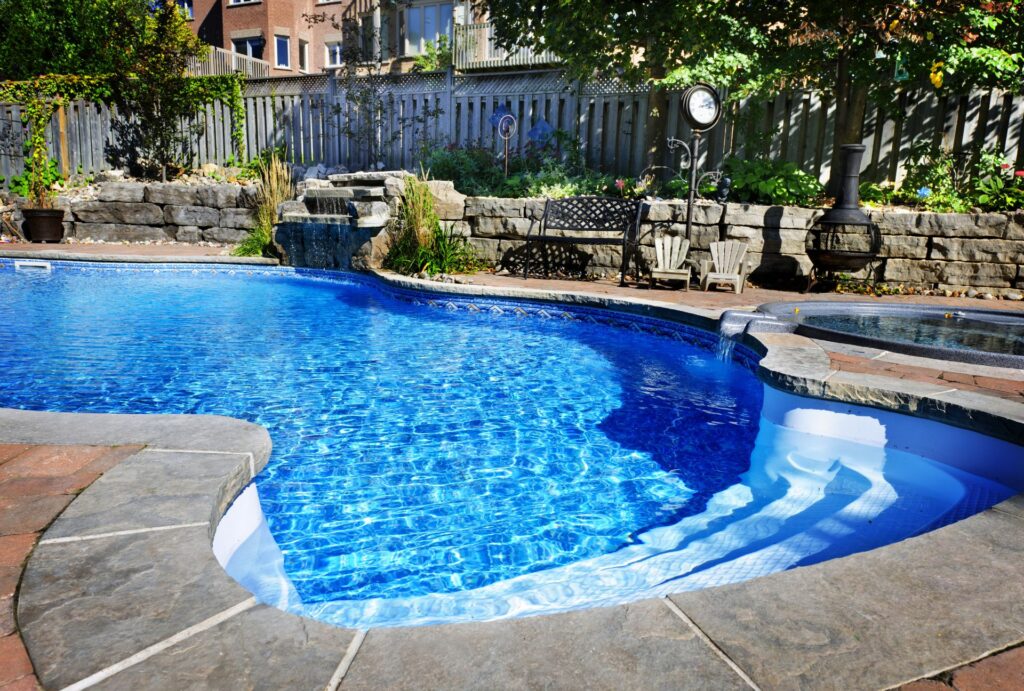
Common Mistakes To Avoid When Installing A Swimming Pool
Swimming pool installation is an exciting project, but it’s not without its challenges. To ensure your dream pool doesn’t turn into a nightmare, it’s crucial to avoid some common pitfalls that many first-time pool owners encounter. Here’s a detailed breakdown of the most frequent mistakes and how to sidestep them for a smooth installation process.
Failing To Check Permits Or Zoning Laws
One of the biggest mistakes homeowners make is skipping the step of verifying permits and zoning regulations. Pool installation is a construction project, and it’s subject to local laws that vary widely from one area to another. You may need permits for excavation, plumbing, and electrical work, as well as meeting specific zoning requirements regarding pool placement and setbacks from property lines.
Failing to adhere to these regulations can result in fines, delays, or even the removal of your pool. To avoid this, always check with your local municipal office before starting any work. It’s also wise to consult your contractor, as they often have experience navigating local regulations and can assist with the permitting process.
Underestimating Maintenance Needs Or Costs
Another common oversight is not fully understanding the ongoing maintenance requirements and expenses that come with owning a pool. Regular upkeep includes balancing chemicals, cleaning the pool, maintaining the filtration system, and seasonal tasks like winterizing. These tasks require both time and money, which can quickly add up if you’re not prepared.
To avoid being caught off guard, research the specific maintenance needs of your chosen pool type. For example, a saltwater pool might have lower chemical costs but require periodic replacement of the salt chlorinator. Create a realistic budget that includes not just installation costs but also the long-term expenses of owning and maintaining a pool.
Choosing The Wrong Contractor Or Cutting Corners On Quality
Hiring the wrong contractor can lead to poor workmanship, delays, and even safety hazards. Some homeowners, in an effort to save money, might hire the cheapest contractor they can find or attempt to cut corners by skipping critical steps in the installation process. Unfortunately, this approach often backfires and results in higher costs down the line due to repairs or legal issues.
To avoid this mistake, thoroughly vet potential contractors. Check their credentials, read reviews, and ask for references. A reputable contractor will provide a detailed contract outlining the scope of work, materials, timeline, and costs. Remember, quality workmanship is an investment that will save you headaches and expenses in the future.
Forgetting About Safety Measures (Pool Covers, Fencing)
Safety is a critical aspect of swimming pool ownership, yet it’s often overlooked in the excitement of installation. Without proper safety measures, pools can pose a significant risk, especially to children and pets. Many areas have strict laws requiring safety features like fencing, self-closing gates, and pool covers.
Even if local regulations don’t mandate these measures, it’s wise to include them in your pool design. A sturdy fence with a locked gate can prevent unauthorized access, while a high-quality pool cover not only enhances safety but also helps maintain water cleanliness and temperature. Alarms and motion detectors are additional features to consider for added peace of mind.
Avoiding these common mistakes can save you time, money, and stress, ensuring a seamless swimming pool installation process. By checking permits, understanding maintenance, hiring the right contractor, and prioritizing safety measures, you’ll be well on your way to enjoying a beautiful and safe backyard oasis. Remember, proper planning and attention to detail are key to making your swimming pool a source of relaxation and joy for years to come.
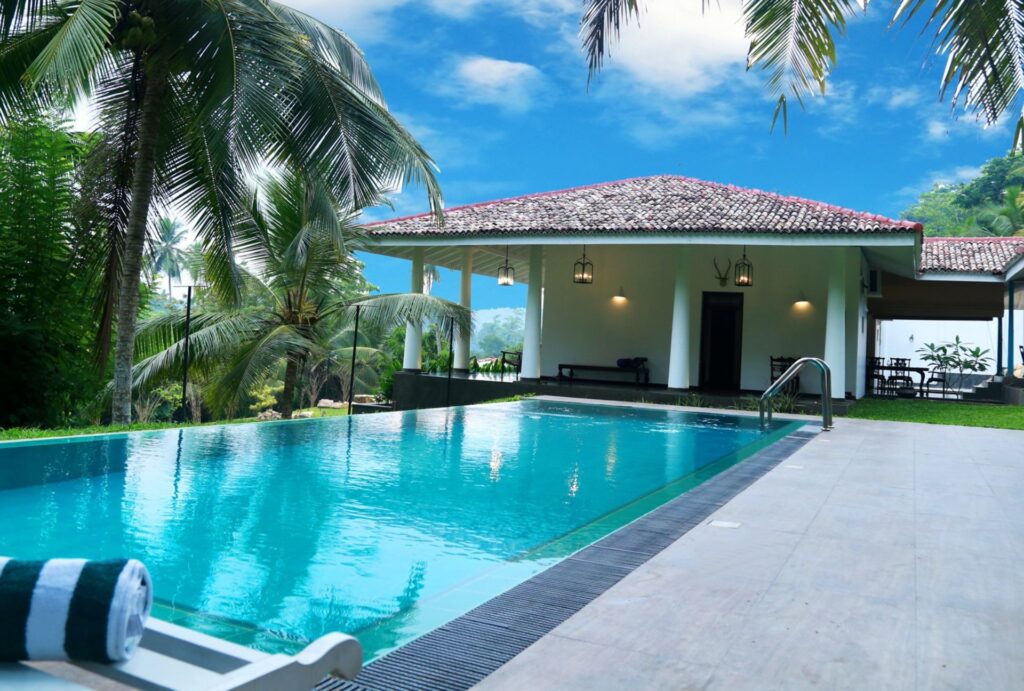
Pool Maintenance Essentials
Proper pool maintenance is the key to keeping your swimming pool clean, safe, and enjoyable all year round. Neglecting maintenance can lead to murky water, algae growth, or even expensive repairs. In this section, we’ll break down essential daily, weekly, and seasonal tasks to ensure your pool remains in excellent condition.
Daily And Weekly Maintenance Tips
Maintaining your pool doesn’t have to be a daunting task. With a simple routine, you can ensure your water stays clean and crystal-clear while extending the life of your pool equipment. Here are the core tasks to focus on.
1. Cleaning The Pool (Skimming And Vacuuming)
Regular cleaning is essential for removing debris like leaves, bugs, and dirt that collect on the pool’s surface.
- Skimming Daily: Use a pool skimmer net to remove floating debris every day or every other day. This prevents debris from sinking and clogging your filter.
- Vacuuming Weekly: Invest in a pool vacuum or automatic cleaner to remove dirt and algae from the bottom of the pool. Manual vacuums work well for small pools, while robotic vacuums save time for larger ones.
2. Checking And Balancing Chemicals
Balancing your pool’s water chemistry is critical for preventing bacteria, algae, and equipment damage. Here’s what to monitor:
- pH Levels: Aim for a pH range of 7.2–7.8. A balanced pH ensures swimmer comfort and protects pool surfaces and equipment.
- Chlorine Levels: Keep chlorine between 1–3 ppm (parts per million) to disinfect the water and prevent algae growth.
- Alkalinity: Maintain alkalinity levels between 80–120 ppm to stabilize pH levels and prevent rapid changes.
- Testing Water Regularly: Use a pool testing kit or strips to check chemical levels 2–3 times a week, or more often during heavy use or hot weather. Adjust levels using the appropriate pool chemicals as needed.
These daily and weekly habits will keep your pool water sparkling and safe for everyone to enjoy.
Seasonal Maintenance Tasks
Seasonal maintenance involves preparing your pool for temperature changes and ensuring it’s ready to use at the start of the swimming season. This step is especially crucial for those living in areas with distinct seasons.
1. Preparing The Pool For Winter (If Applicable)
If you live in a region with freezing temperatures, winterizing your pool is essential to protect it from damage caused by ice and debris. Here’s what to do:
- Clean Thoroughly: Skim, vacuum, and balance chemicals before closing the pool. Adjust chlorine and pH levels to prevent algae growth.
- Lower Water Level: Drain the pool below the skimmer and jets to prevent freezing and expansion.
- Add Winterizing Chemicals: Use algaecides and chlorine to prevent algae growth and maintain water quality during the off-season.
- Cover The Pool: Invest in a durable winter pool cover to keep out debris and prevent water contamination. Make sure the cover is securely fastened.
2. Opening The Pool For Summer
When warmer weather arrives, it’s time to prepare your pool for the swimming season. Here’s a step-by-step approach:
- Remove The Cover: Clean and store the pool cover. Inspect it for damage and make necessary repairs for next season.
- Refill The Pool: Add water to bring the level back to normal.
- Inspect Equipment: Check the pump, filter, and plumbing for damage or wear. Replace or repair as needed.
- Shock The Pool: Use a pool shock treatment to eliminate bacteria and contaminants that may have built up over the winter.
- Balance Chemicals: Test and adjust pH, chlorine, and alkalinity levels to ensure the water is safe and ready for swimming.
By following these seasonal tasks, you’ll avoid surprises and ensure your pool is in top shape for every season.
Maintaining your swimming pool may seem like a lot of work, but establishing a consistent routine makes it manageable and rewarding. Daily and weekly cleaning and chemical balancing, combined with thoughtful seasonal preparation, will keep your pool sparkling, safe, and ready for enjoyment year-round. Remember, a well-maintained pool not only enhances your outdoor space but also saves you money in the long run by avoiding costly repairs.
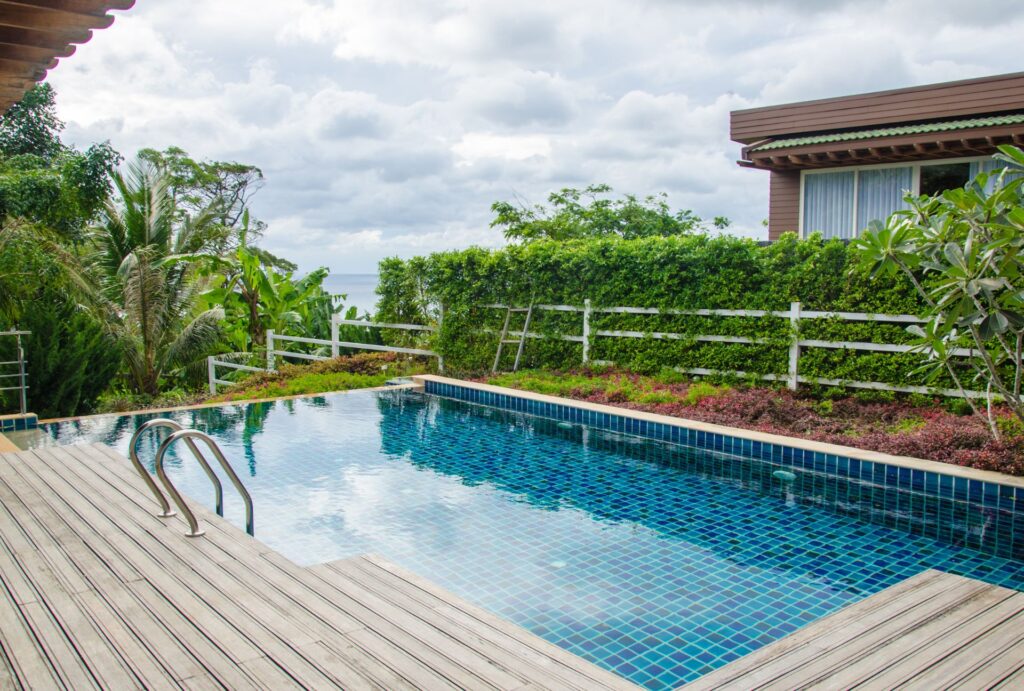
Enhancing Your Pool Area: Transforming Your Backyard Into A Paradise
A swimming pool is often the centerpiece of your backyard, but enhancing the surrounding area is just as important to create a truly inviting space. By carefully planning the landscaping, adding thoughtful features, and incorporating functional elements, you can elevate your pool area from a simple recreational spot to a complete outdoor oasis. Below, we’ll explore landscaping ideas, popular add-ons, and tips for creating a balanced blend of functionality and aesthetics.
Landscaping Ideas To Complement Your Pool
The right landscaping can seamlessly integrate your pool with the rest of your backyard, adding natural beauty and a sense of privacy. Here are some ideas to consider.
- Lush Greenery: Use plants and shrubs to create a tropical feel or natural barrier around the pool. Opt for low-maintenance, pool-friendly plants like palms, ferns, or ornamental grasses that won’t drop excessive leaves into the water.
- Paved Walkways: Install non-slip stone or tile pathways around the pool to ensure safety while adding a polished look. Choose materials like travertine, limestone, or stamped concrete for durability and style.
- Privacy Hedges: Plant evergreen hedges or bamboo around the pool to enhance privacy while maintaining a natural aesthetic.
- Flower Beds: Surround your pool area with vibrant flowers that bloom seasonally to add pops of color and charm. Ensure the plants are resistant to pool water splashes and heat.
- Rock Gardens: Incorporate a rock garden or decorative gravel to add texture and contrast to your pool’s design.
Landscaping isn’t just about looks—it can also improve functionality by controlling soil erosion, reducing water runoff, and providing shade.
Popular Add-Ons: Water Features, Lighting, And Outdoor Furniture
Adding the right features to your pool area can turn it into a luxurious retreat. Here’s how you can upgrade your space.
- Water Features
Enhance the ambiance of your pool with soothing water features like fountains, cascading waterfalls, or a bubbling spa. These features add movement and sound, creating a serene environment that mimics a natural setting. - Lighting
Proper lighting can completely transform your pool area after sunset. Consider installing LED pool lights in various colors for underwater illumination. Accent lighting along pathways, around landscaping, or on poolside structures ensures safety while setting a relaxed evening vibe. Solar-powered options are eco-friendly and cost-effective. - Outdoor Furniture
Comfortable and stylish furniture can make your poolside a hub for relaxation and entertainment. Add loungers for sunbathing, cushioned sofas for cozy gatherings, and a dining set for al fresco meals. Look for weather-resistant materials like wicker, teak, or aluminum to withstand outdoor conditions.
For extra flair, consider adding a poolside pergola or cabana to provide shade and a touch of luxury.
Creating A Functional And Aesthetic Outdoor Oasis
An outdoor oasis is about more than just looks; it’s about functionality and comfort. Here are some tips to create a space that balances practicality with aesthetic appeal.
- Zoning Your Space: Divide your pool area into zones for different activities, such as lounging, dining, and playing. Use furniture and landscaping to naturally define these areas.
- Incorporating Shade: Install umbrellas, shade sails, or pergolas to provide relief from the sun while adding an architectural element.
- Smart Storage Solutions: Keep the area clutter-free by adding built-in storage benches or poolside cabinets for towels, toys, and cleaning supplies.
- Sustainability: Incorporate sustainable elements like drought-tolerant plants, permeable pavers, or a rainwater collection system to make your pool area eco-friendly.
By combining thoughtful design, practical features, and personal touches, your pool area can become a stunning outdoor retreat that reflects your style and meets your needs. Whether you’re hosting a party, enjoying a quiet afternoon, or simply admiring the view, an enhanced pool area will make every moment more special.
A well-designed pool area is an investment in your home and lifestyle. With a little planning and creativity, you can create a space that goes beyond a place to swim—it becomes a destination for relaxation, entertainment, and making lasting memories.
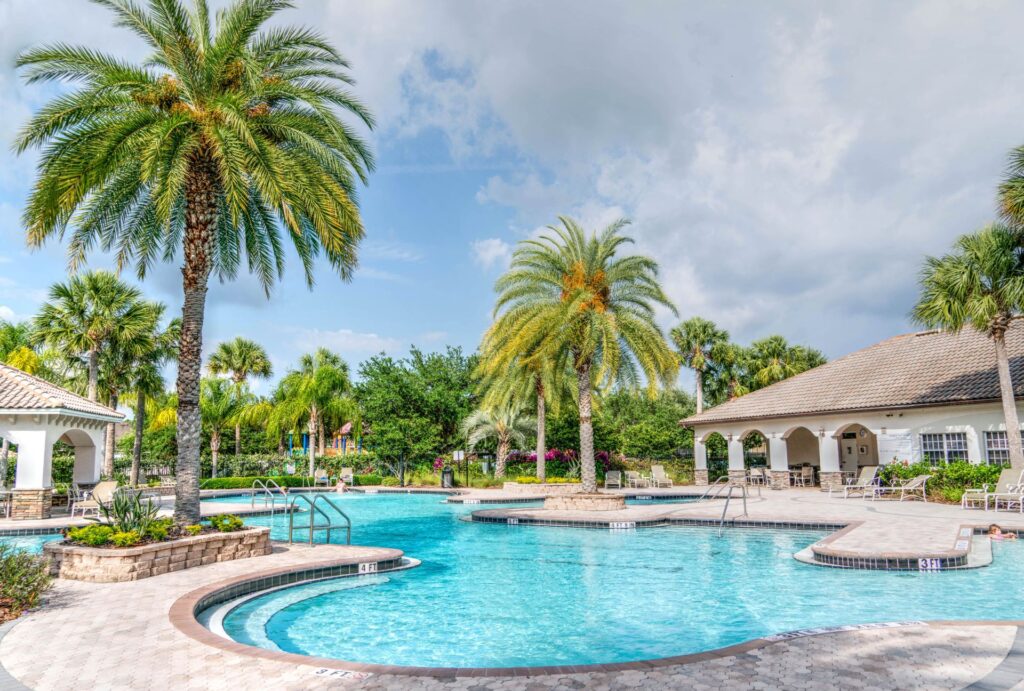
Is Installing A Pool Right For You?
Deciding whether to install a swimming pool is an exciting yet significant decision. While the idea of having your own private oasis is tempting, there are a few key factors to consider before diving into this major investment. Let’s take a closer look at how budget, time, space, and your overall goals can help determine if a swimming pool is the right choice for you.
Budget: Can You Afford It Without Compromising?
Installing a pool requires a solid financial plan. The initial installation costs for in-ground pools can range from $30,000 to $100,000 or more, while above-ground pools are generally more affordable, averaging $1,500 to $10,000. However, the investment doesn’t end there. You’ll also need to account for ongoing maintenance costs, such as water treatments, cleaning supplies, repairs, and increased utility bills. For those in colder climates, seasonal tasks like winterizing the pool add to the long-term expenses. Ensure your budget allows for both the upfront and recurring costs without stretching your finances too thin. A well-maintained pool is a joy, but a neglected one can quickly become a burden.
Time: Are You Ready For The Commitment?
Owning a pool isn’t a “set it and forget it” scenario—it requires regular upkeep. Weekly tasks like cleaning, skimming, and testing chemical levels are necessary to maintain water quality and ensure your pool remains a safe space for swimming. Beyond that, larger time commitments are needed for seasonal maintenance, like reopening your pool in the spring or closing it before winter. If you’re short on free time, hiring professional pool maintenance services may be a viable solution, but this adds to the overall cost. Be realistic about how much time you’re willing to dedicate or whether you’re comfortable outsourcing these responsibilities.
Space: Does Your Property Have Room For A Pool?
Your backyard is the canvas for your swimming pool, so evaluating your available space is critical. Pools need to be placed in areas that comply with local zoning regulations, and you’ll also need to leave room for decking, landscaping, and safety measures like fencing. A crowded or ill-placed pool can diminish your outdoor experience rather than enhance it. Consider how the pool will fit into your backyard layout and whether it aligns with other outdoor plans you may have, such as gardening, entertaining, or creating play areas for children.
Goals: What Do You Hope To Achieve With A Pool?
Why do you want a swimming pool? This may seem like a simple question, but your answer can help clarify whether installing one aligns with your lifestyle and priorities. If your goal is to create a space for family fun, relaxation, or fitness, a pool might be a perfect addition to your home. On the other hand, if you’re primarily motivated by the idea of increasing property value, you’ll need to carefully research whether pools in your area provide a good return on investment. Defining your goals will help you decide whether a pool is a luxury you’ll use regularly or a costly feature that might go underutilized.
Encouragement: Make Your Dream A Reality
If planned carefully, a pool can be the centerpiece of a lifetime of memories. From summer gatherings to quiet evening swims, a well-thought-out pool installation can transform your backyard into a personal retreat. By weighing your budget, time, space, and goals, you can ensure that your decision is both practical and rewarding. With the right planning and commitment, your dream of owning a pool can become a reality that adds joy and value to your home for years to come.
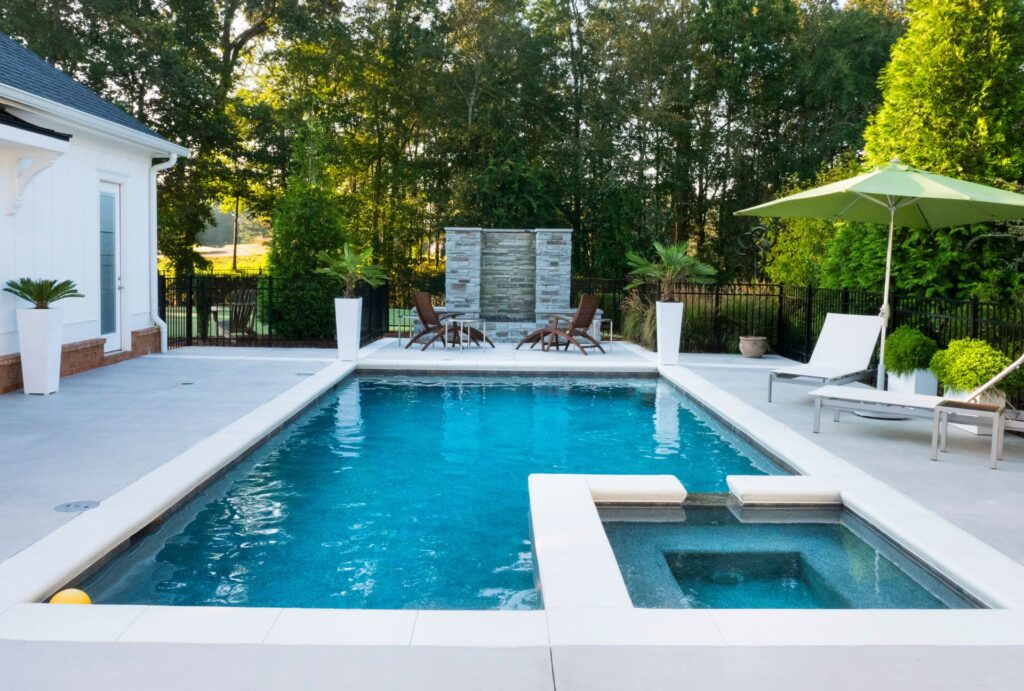
FAQs: About The Swimming Pool Installation
Conclusion
Planning a swimming pool installation is an exciting journey that starts with understanding your needs, choosing the right type of pool, carefully budgeting for costs, and learning how to maintain it effectively for years of enjoyment. By breaking the process into manageable steps and being well-informed, you can avoid common pitfalls and create a beautiful, functional pool that becomes the centerpiece of your backyard. Whether you’re envisioning summer afternoons with family or a serene escape for relaxation, your dream pool is within reach with the right preparation and expert advice. If you have any questions or need further guidance, don’t hesitate to leave a comment below—we’d love to help! And if you know someone who’s also dreaming of a pool, share this guide to help them get started on their journey.
Find A Professional Pool Builders Company Near You!
About the Author:
Mike Veail is a recognized digital marketing expert with over 6 years of experience in helping tradespeople and small businesses thrive online. A former quantity surveyor, Mike combines deep industry knowledge with hands-on expertise in SEO and Google Ads. His marketing strategies are tailored to the specific needs of the trades sector, helping businesses increase visibility and generate more leads through proven, ethical methods.
Mike has successfully partnered with numerous companies, establishing a track record of delivering measurable results. His work has been featured across various platforms that showcase his expertise in lead generation and online marketing for the trades sector.
Learn more about Mike's experience and services at https://theleadguy.online or follow him on social media:

